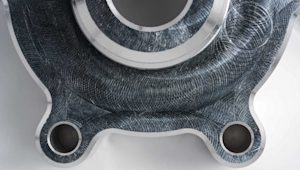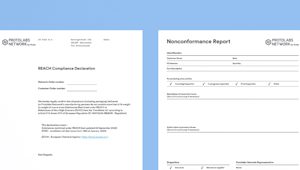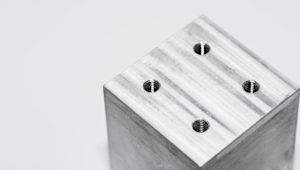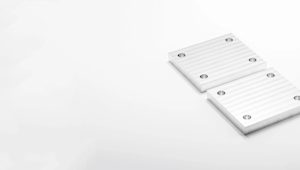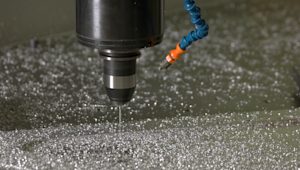Quality documentation plays a key role in verifying that parts or products meet established quality criteria, promoting consistency, transparency, and accountability throughout the manufacturing lifecycle. In this article, we’ll take a look at what quality documentation is, types of quality documentation and how you can obtain them, and when you need it.
What is quality documentation?
In manufacturing, quality documentation refers to organized records and documents that describe the processes, procedures, standards, and outcomes related to product quality. It includes plans, specifications, inspection records, and certifications that ensure adherence to industry standards and regulatory requirements.
Is quality documentation mandatory?
Quality documentation is not always, but often, mandatory in manufacturing – and it is almost always beneficial. Regulatory bodies, industry standards, and customer expectations necessitate the creation and maintenance of comprehensive documentation to ensure product quality, safety, and compliance.
Non-compliance with documentation requirements may result in legal consequences, rejection of parts or products, or loss of customer trust. Especially in regulated industries, maintaining thorough quality documentation is a crucial and obligatory aspect of ensuring product integrity and meeting industry standards.
How do you obtain quality documentation?
Organizations typically obtain quality manufacturing by establishing a quality management system (QMS), which is a structured framework that ensures parts or consistently meet customer requirements and comply with relevant standards. It involves documented processes, policies, and procedures designed to achieve and maintain high-quality products, customer satisfaction, and continuous improvement. Our set of procedures and protocol for assuring quality is known as The Protolabs Network Standard.
Alternatively, organizations can purchase parts or products that already possess the quality documentation they need. For example, Protolabs Network is ISO-9001 certified. We can also provide essential documentation and records like CMM dimensional reports, REACH, RoSH, Conflict Minerals Declarations and Certificates of Conformance upon request. There are also additional certifications available through our network of manufacturing partners.
When do you need quality documentation?
Quality documentation is often needed throughout the entire manufacturing process. Here are a few situations when quality documentation is especially important.
-
Proving regulatory compliance. Industrial organizations are often subject to various standards, regulations, and certifications (such as ISO standards, industry-specific standards, or regulatory requirements). Quality documentation is necessary to demonstrate compliance with these standards, ensuring that products meet the specified quality and safety criteria.
-
Quality Management System (QMS) implementation. A QMS is a structured framework that an organization establishes to ensure its products or services consistently meet customer requirements and comply with relevant standards. Quality documentation forms the foundation of a QMS, and includes quality manuals, procedures, and work instructions that outline the processes, responsibilities, and controls necessary to achieve and maintain product quality.
-
Operational consistency. Work instructions and standard operating procedures (SOPs) provide step-by-step guidelines for carrying out tasks and processes consistently. This consistency is crucial for minimizing variations in product quality and ensuring that each product meets the specified standards.
-
Product development and design. Detailed documentation is essential for design and development processes, ensuring that products are designed to meet specific quality requirements. This includes design specifications, verification and validation records, and design change documentation.
Types of quality documentation
Different types of quality documentation apply to different aspects of parts or manufacturing processes, or to different industries. Here’s a quick look at common providers of (or frameworks for) quality documentation and where they apply. This is by no means a comprehensive list, but they are often needed and used by Protolabs Network customers.
-
International Organization for Standardization (ISO) International standards to ensure product quality, safety, and efficiency across industries.
-
Deutsches Institut für Normung (DIN). Germany's national standards organization, developing norms to enhance product and service quality in various industries globally.
-
American Society of Mechanical Engineers (ASME). Establishes standards for mechanical engineering, ensuring safety, reliability, and consistency.
-
International Aerospace Quality Group (IAQG). Standards for aerospace manufacturing.
-
National Pipe Thread (NPT). Specifies standards for pipe threads, ensuring compatibility and reliability in fluid systems.
-
Society of the Plastics Industry (SPI). Guidelines for the plastics industry.
-
RoHS and REACH. Frameworks established by the European Union to address environmental and health concerns related to hazardous substances in products and chemicals.
Now, let’s get more specific. We’ll take a look at four areas where quality documentation is necessary, then give a few examples of certifications or documentation we often see our customers need or request.
Documentation for quality assurance
Robust quality assurance documentation ensures systematic processes, consistent product quality, and customer satisfaction. In manufacturing environments, such documentation often includes the following.
-
First Article Inspection (FAI). A comprehensive examination and verification process performed on the initial production samples of a new product. It involves comparing these samples to engineering specifications to ensure they meet design requirements, helping validate the manufacturing process and ensure quality and compliance.
-
SPI 1998 Standards. Defines quality practices for plastic molding processes, ensuring consistency and product integrity.
-
DIN 82: A standard ensuring manufacturing quality, specifying requirements for guidelines and parameters for the design and calculation of gears, helping ensure uniformity and accuracy in gear manufacturing.
-
ISO 9001. An international standard for Quality Management Systems (QMS). It sets out criteria for a systematic approach to quality, emphasizing customer satisfaction, process efficiency, and continual improvement.
-
ISO 13485. A QMS standard for the medical device industry. It outlines requirements for quality management systems, ensuring the safety and efficacy of medical devices.
-
ISO 14001. An international standard for Environmental Management Systems (EMS). It provides a framework for organizations to develop and implement environmentally sustainable practices, reducing their environmental impact.
-
ITAF 16949. A QMS standard developed for the automotive industry. It aligns with ISO 9001 but includes additional automotive-specific requirements, focusing on process efficiency, product quality, and supply chain management.
-
AS 9100. A QMS standard specific to the aerospace industry. It incorporates ISO 9001 requirements but adds aerospace-specific criteria, emphasizing safety, reliability, and regulatory compliance.
Quality documentation for materials
Quality documentation for materials is crucial for ensuring traceability, compliance, and reliability. They provide detailed information on composition and properties, guaranteeing that materials used in manufacturing meet required specifications, contributing to product integrity and safety. The following are two types of common quality documentation for materials.
Material certificates. Material certificates provide detailed documentation verifying the composition, properties, and quality of materials. They are essential for traceability and ensuring that materials used in manufacturing meet specified standards, contributing to product integrity.
Material test report. Material test reports offer comprehensive information on the testing and evaluation of material properties, such as mechanical and chemical characteristics. They validate that materials meet required specifications and quality standards in manufacturing processes.
Quality documentation for regulatory compliance
Quality documentation can also provide a transparent record of adherence to specific standards and regulations, demonstrating an organizations commitment to environmental and health regulations, ensuring legal compliance and promoting responsible business practices. Common documentation here includes the following.
-
RoHS certificates. RoHS certificates confirm compliance with the EU’s Restriction of Hazardous Substances Directive. They affirm that products are free from specified hazardous substances, ensuring environmental and health safety and meeting regulatory requirements.
-
REACH certificate. A REACH certificate affirms compliance with the EU's Registration, Evaluation, Authorization, and Restriction of Chemicals regulation. It ensures proper chemical management, safety, and adherence to environmental standards.
Quality documentation for inspection and testing
Quality documentation can provide a systematic record of procedures, criteria, and results. This helps organizations prove that products meet specified requirements and ensure quality control. Common documentation here includes the following.
-
Certificate of Conformance. Asserts adherence to specified requirements, ensuring products meet quality and safety standards.
-
Dimensional Inspection Report (CMM). Provides precise measurements through Coordinate Measuring Machines, ensuring products meet dimensional specifications.
-
DIN 16901-130. A standard for mold designs, ensuring consistency and quality in molding processes.
-
ISO13444. Guidelines for the plastics industry, ensuring conformity and performance of plastic products.
-
ISO 2859-1, ISO 261 and 262, ISO 2859. Standards for product sampling, ensuring representative inspection and quality control.
Download a PDF guide to all of the types of quality documentation we offer.
Find out more about our quality management procedures, The Protolabs Network Standard and how we ensure your parts meet the industry’s highest benchmarks for quality.
Ready to get your design manufactured? Upload your part for an instant quote.
Frequently asked questions
What is quality documentation in manufacturing?
Organized records describing processes, standards, and outcomes to ensure product quality, safety, and compliance in manufacturing.
Is quality documentation mandatory in manufacturing?
It is often required for regulatory compliance, meeting industry standards, and ensuring product quality, safety, and compliance.
When is quality documentation needed?
Quality documentation is needed throughout the entire manufacturing process.
What are common types of quality documentation for materials?
Material certificates and test reports provide detailed information on material composition, properties, ensuring traceability, and compliance.
What is the purpose of First Article Inspection (FAI)?
FAI ensures initial production samples meet design specifications, validating the manufacturing process, ensuring quality, and compliance.
What is the role of ISO and DIN in quality documentation?
ISO and DIN are standards organizations developing guidelines for quality documentation.








